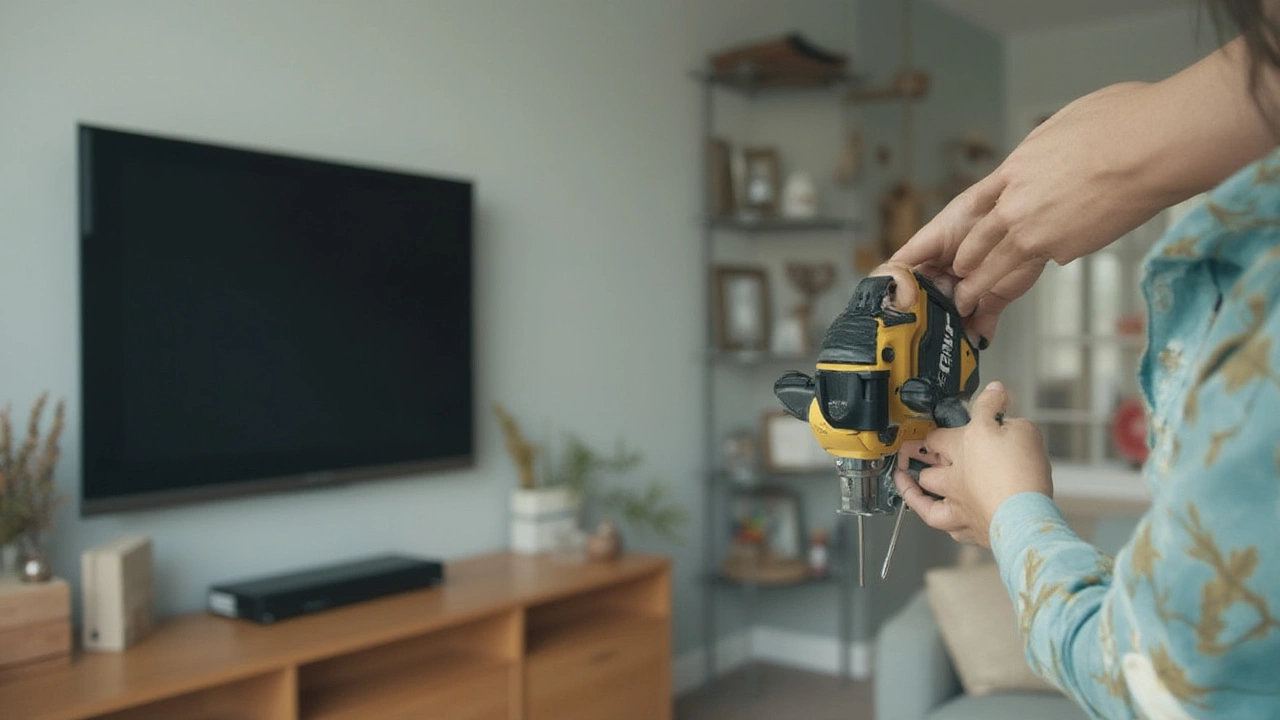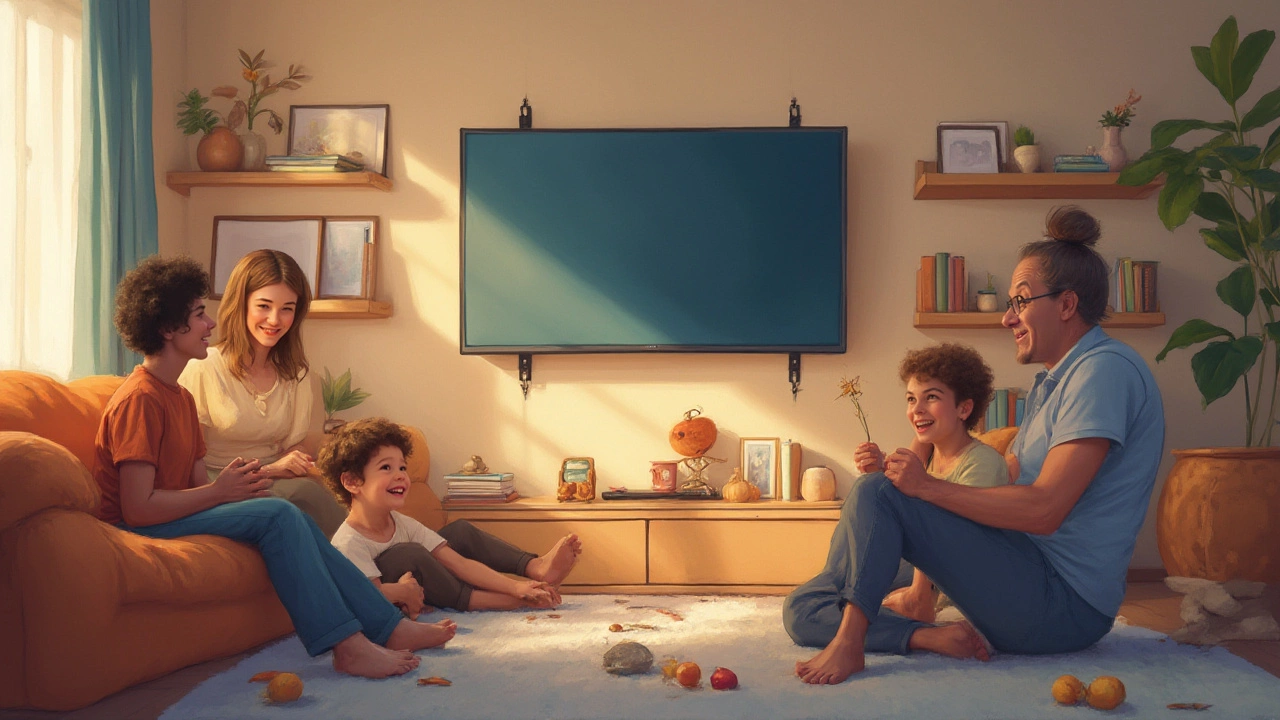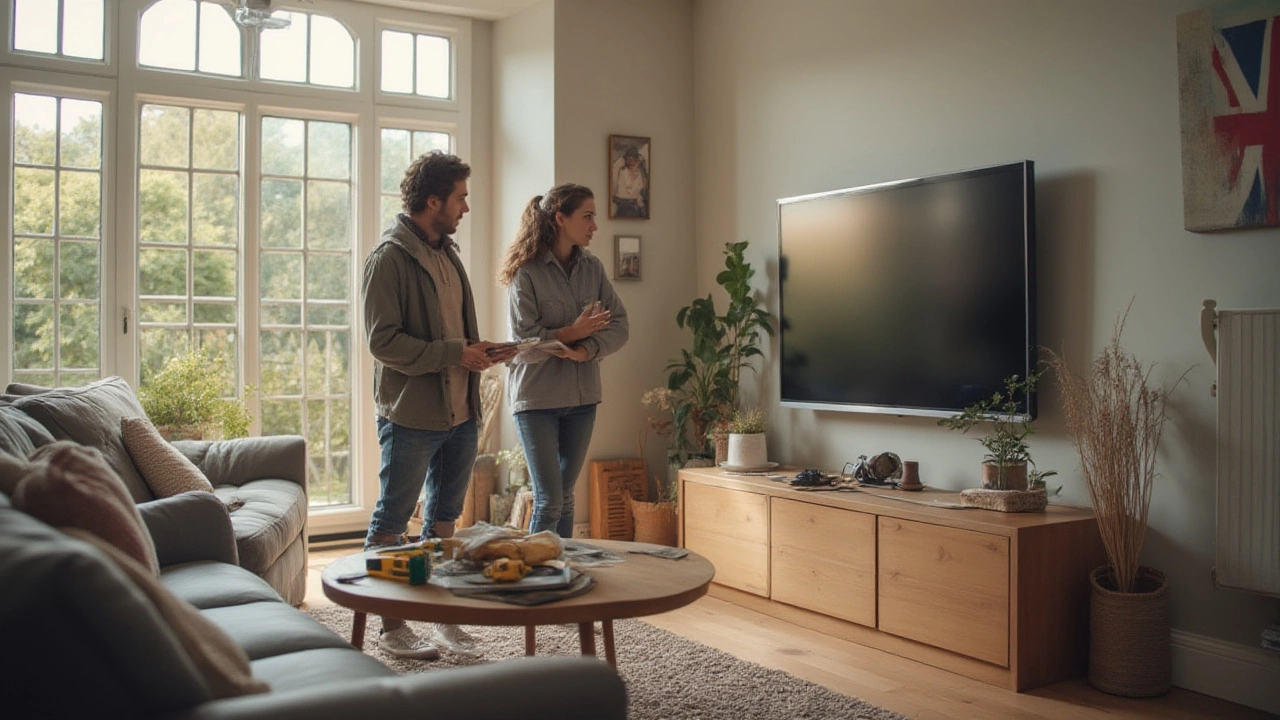Flat screen TVs cost a pretty penny. First instinct after unpacking—can you just set it up on a stand, or do you really need to drill into your wall and mess up your décor? Loads of folks eye their shiny new screen, then the furniture below, and debate if they’re just asking for disaster. Turns out, the answer is yes: you absolutely can put a flat screen TV on a stand, but the story doesn't end there. There are some real dos, don’ts, and eye-opening facts worth knowing before you drop that expensive beauty onto your living room furniture. Ready to save your TV (and your nerves)? Let’s break down what everyone really needs to know about stands, safe setups, and making it all work in British homes without a hiccup.
Types of Stands and Why Setup Matters
Walk into any shop from the Bullring to your local IKEA and you’ll see a wall of TV stands—modern, traditional, floating, glass, crazy LED ones. But not all stands are made equal when it comes to supporting your TV. It sounds obvious, but thousands of TV mishaps each year prove people don’t always check their furniture’s credentials. The Royal Society for the Prevention of Accidents (RoSPA) reported over 5,000 people a year in the UK end up in A&E after a TV topples. Mishaps happen quickly: one swipe from a dog’s tail (Milo has form here) or a child climbing up for a closer Peppa Pig episode can spell disaster. Choosing the right stand is less about looks, more about safety and function.
TVs have come a long way from those chunky old backs, but they’re still heavier than most expect. The average 55-inch flat screen weighs about 16-18kg. Stand makers rate their furniture for certain maximum weights and screen sizes. If your TV’s diagonal is bigger than your stand’s top surface, that’s a red flag—a large screen with a smaller base is an instant topple risk. Also, different materials matter: solid wood or metal is sturdy; thin glass and plastic not so much. Look for a stand with wide feet for stability, preferably with rubber or non-slip pads underneath. Want some real data? Here’s a quick look:
| Screen Size | Average TV Weight | Recommended Stand Width |
|---|---|---|
| 32-inch | 4-8kg | >32in (81cm) |
| 43-inch | 8-12kg | >43in (109cm) |
| 55-inch | 16-18kg | >55in (140cm) |
| 65-inch | 20-25kg | >65in (165cm) |
Some stands come with mounting panels or brackets. These act as a sort of hybrid: the TV is on the stand but anchored like on a wall. This adds an extra layer of confidence, especially with pets like Luna running amok or kids bouncing round your lounge. Look for “VESA compliant” mounting holes (those little holes on the back of your TV) matching the stand’s bracket—it’ll save you a world of pain during setup. If you’re keen to keep things simple, there are stands with locking mechanisms or straps to go at the back, anchoring your TV to the furniture—or even to the wall behind with a bar or band for extra protection.

Safe Placement and Best Practices for Flat Screen TVs
Now, let’s talk real-life placement. You want your TV at eye level for comfy viewing (no neck cramps, cheers). Experts at Which? magazine recommend that the centre of your TV sits roughly at eye height when you’re seated. For most UK lounge sofas, that means about 105cm from the floor to the TV’s centre. Don’t just eyeball it—measure your seat height and adjust accordingly.
Another essential—keep the back of the TV at least 10cm from the wall to make sure cables don’t jam up and your TV gets enough airflow to avoid overheating. If it’s pressed against a cold, damp wall in winter (typically British homes, right?), that can cause condensation, so a tiny gap is your TV’s best mate. And beware of windows. Direct sunlight can cause annoying glare or even damage the screen over time, especially with older LED models. My mate across town put his new telly opposite the bay window; by May, he could barely see the screen by midday, which is just pure bad luck—and a bit of poor planning.
If you’ve got pets or kids, extra precautions are worth it. Consider anti-tip straps: these strong nylon or metal straps bolt into the TV and anchor to the stand or wall. A small investment, massive peace of mind. Even the most chilled dogs can turn hyper at the doorbell—Milo’s tail could sweep the remote clean off any table, and Luna’s fascination with cables is almost artful. Keep cables tidy with clips or sleeves, and route them away from where curious paws or hands can yank them. Tangled wires don’t just look messy—they’re a tripping and pulling hazard.
Don’t ignore the weight distribution, either. If your stand has drawers, load the heaviest stuff down low—this makes the whole thing harder to tip. The old trick of using your stand as a mini bookshelf or shoe rack works, but never put heavy items up top next to the TV. Ever wondered why so many stands come with little warning stickers? That’s why.
- Measure your space, not just for stand size but plug access too. No one wants to contort like a gymnast every time they plug in their PlayStation.
- If you buy a used stand, check all screws, joints and feet. Even a slight wobble spells trouble over time.
- Avoid placing drinks, plants, or anything with water near the TV or stand. One spill, and you’re toast.
Think about the direction your TV faces. Too close to a radiator or heater and you risk long-term heat damage; besides, warm air means more dust sucked into vents. The best setups have open airflow from all sides whenever possible.
And here’s a pro tip I learned the hard way: use a spirit level. Even stands advertised as ‘self-leveling’ can still be a bit off. A slightly sloping surface can cause slow slips, especially with thin metal stands and heavier screens. A little patience here goes a long way. You don’t need to overthink it, but do take your time—it’s one job you don’t want to rush.

Choosing the Right TV Stand for Your Home
Now the fun bit, and my favourite: picking a stand with style that matches your space. I've been through my share of mismatched furniture—trust me, nothing looks worse than a space-age glass stand next to granny's oak dresser. Measure your room before anything else, thinking not just about the stand itself but leaving space for walkways (and, if you’re like me, for the dog bed nearby).
For a modern look, floating stands attached to the wall create a clean vibe but usually hold less weight. Chunky wooden stands work well for larger TVs and heavier setups. If you want storage, think about how many games consoles, Blu-rays, or remote controls you want out of sight. Drawers reduce clutter, but open shelving offers better airflow for electronics. British homes tend to be smaller, so multi-purpose stands (the kind with extra storage below) are gold. Compact designs with wheel casters can be handy for smaller rooms, but watch out—wheels must lock in place to keep things safe.
Corner TV stands are a life-saver for awkward spaces. Not only do they free up the longest wall, they often tuck out of busy routes where tails, toys, and trainers roam. Make sure to measure the depth, not just the width. You don’t want a sofa eating into your TV-viewing zone, nor do you want the screen poking out past the edge of a shelf. And don’t overlook cable management: look for rear openings or hidden channels, because a neat back is so much better than a spaghetti mess of wires.
Let’s dispel a common myth: expensive stands aren’t always sturdier. Price often reflects finish, brand, or extra features (like LED lights or soft-close drawers) more than brute strength. A stand from Argos or B&M can be just as reliable as something from a swanky designer if it ticks these boxes:
- Sturdy materials, especially at the base.
- Weight rating clearly above your TV’s mass.
- Wide enough footprint for screen, steady balance, and room for accessories.
- Anti-tip safety features if you have children or pets.
- Good ventilation for your electronics.
Sometimes it’s tempting to use what you already own—like a sideboard or an old table—but only do this if you’re 100% sure about stability, weight, and height. TV stands exist for a reason. If you do go the repurposed route, reinforce with anti-tip straps and slip pads under the feet. I've seen enough wobbly setups to know a bad base is a recipe for disaster.
One last nugget: think of the room’s acoustics. TVs near the corners reflect more sound, which can oddly boost the bass but muddle dialogue. Audiophiles recommend stands with open middles for soundbars and speakers, so you get better audio with less echo. No need for a cinema’s worth of gear unless you’re a die-hard, but planning a spot for even a small soundbar saves hassle (and moans from the family when they can’t make out what’s being said on telly).
So can you put a flat screen TV on a stand? Absolutely—just do it right and your telly will be the centrepiece of your room, safe, stylish and ready for movie nights, football matches, or a cosy Sunday with the pets. Keep it sturdy, pick wisely, and you’ll have peace of mind every time someone walks by with a cuppa or a wagging tail in tow.


Write a comment